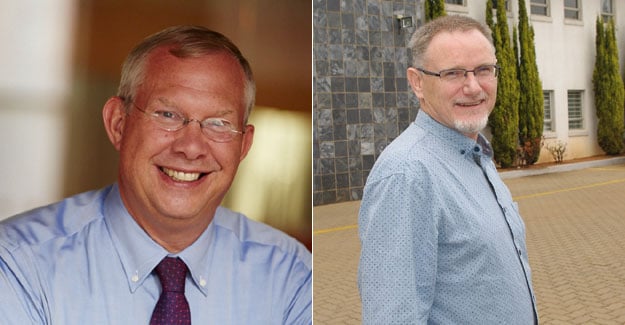Green buildings: conserving energy, preserving the environment and saving money
There is a global shift towards energy efficiency, environmental sustainability and green buildings. South Africa's recent signing of the Paris Agreements, coupled with increasing demand on the power grid is driving many businesses to invest in energy efficiency and alternative energy sources. Global interest and investments in energy efficiency and renewable energy are at an all-time high. At the same time, case studies for the 'greening' of existing buildings, are proving that such investments can not only save energy, but also provide an attractive financial return for building owners.

Clay Nesler and Neil Cameron
For example, in 2009, the Empire State Building in the United States embarked on a project to reduce costs, increase real estate value and protect the environment. In 2011, the building beat its first year energy-efficiency target by 5%, saving $2.4m. The following three years saw the program generate a total of approximately $7.5m in energy savings at the landmark building. The multi-million dollar investment in ‘greening’ the building is projected to save 38% in energy consumption, not only saving money for the building’s owners, but also for the building’s tenants who agreed to build out their office space to high performance standards.
On-site renewable energy generation
The next big trend in the evolution of green buildings is to use on-site renewable energy generation to deliver more energy to the electric grid than it consumes from the grid over the course of a year. These buildings, called ‘nett zero’ or ‘nett positive’, are a key global strategy for delivering on the Paris COP21 commitments.
The 2016 Johnson Controls Energy Efficiency Indicator (EEI) survey of more than 1,200 facility and energy management executives in the United States, Brazil, China, Germany and India indicates that as many as 72% of the organisations surveyed anticipate increased investments in energy efficiency and renewable energy over the next 12 months. It also pointed to lack of funding, insufficient payback, uncertain savings and a lack of technical expertise as the most significant barriers to investment.
Similarly, there is a perception in South Africa that investing in green buildings is prohibitively expensive. While it can be costly, the cost savings will usually more than make up for the expenditure over time and subsequent to the payback period, the savings add directly to the bottom line. Over and above the cost saving and contribution towards a more sustainable environment, there are multiple additional benefits to energy efficient buildings, such as the positive effect on a business’ brand and reputation with investors, customers and employees. There is a “feel-good” factor to knowing that a business is concerned for the environment.
Start with little things
There are a number of ways that companies can begin investing in energy efficiency and they don’t all involve the investment of massive amounts of money into complete building retrofits. Building owners can start with little things, like properly insulating their building to reduce the cooling load, thus reducing the size and costs of the air-conditioning system.
Using sensor technology to automatically detect people’s presence in a conference room or office and adjusting the lighting, cooling and ventilation accordingly also makes a big impact, as equipment is not in use unnecessarily. Building owners with multiple tenants can also promote energy efficiency by including energy efficiency provisions in leases to incentivise high performance. They can also educate tenants and promote healthy competition between tenants to see who can reduce energy the most over a given time period.
Businesses looking to ‘go green’ adopt a phased approach, ensuring that the right steps are taken in the right order. The iconic building in the US example shows us that having a knowledgeable team of experts on board and following a proper, well thought out master plan can ensure that benefit is maximised with minimum investment.
With such a strong business case for energy efficiency and renewable energy, South African companies should have no excuse for not investing in greener buildings. With the global trend evidencing a move towards a more sustainable future, South African companies need to act now to take full advantage of the significant financial benefits while helping to preserve the environment and drive economic growth and job creation in our communities.
About the author
Clay Nesler is VP of Global Energy and Sustainability, and Neil Cameron is area general manager, Africa for the Building Efficiency business of Johnson Controls.